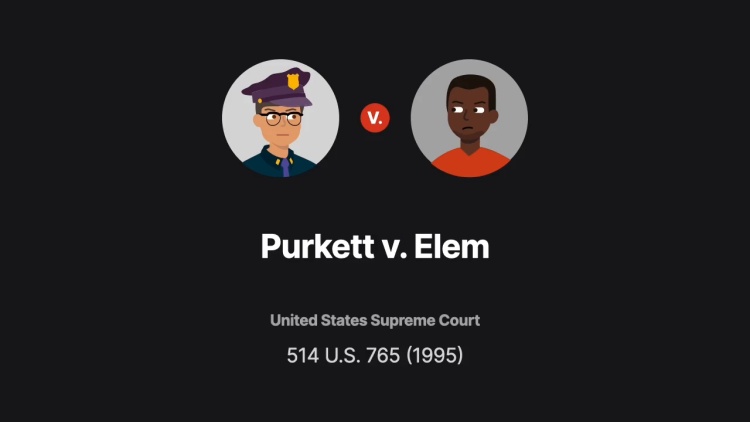Purkett v. Elem
United States Supreme Court
514 U.S. 765 (1995)
- Written by Arlyn Katen, JD
Facts
Jimmy Elem (defendant) was charged with second-degree robbery for a robbery that did not involve a gun. During jury selection, Elem raised Batson objections to the prosecutor’s peremptory strikes of two Black men from the jury panel, jurors 22 and 24. The prosecutor claimed that he struck juror 22 because juror 22 had long, unkempt, curly hair, that he struck jurors 22 and 24 because they were the only two prospective jurors with facial hair, and that he believed that juror 22’s and 24’s mustache-and-goatee combinations looked suspicious. The prosecutor also claimed that juror 24 might believe that a gun was required to commit a robbery because juror 24 had been robbed at gunpoint. The trial court overruled Elem’s objections without explanation. The jury convicted Elem. Elem appealed, renewing his Batson claim. The Missouri Court of Appeals affirmed, reasoning that the prosecutor’s explanation was a legitimate hunch rather than racial discrimination. Elem then filed a habeas corpus petition in federal district court. The district court rejected Elem’s petition. The United States Court of Appeals for the Eighth Circuit reversed, finding that the peremptory strike of juror 22 violated Batson because suspicious-looking facial hair was not a plausible, race-neutral reason that was facially relevant to whether juror 22 was qualified to serve as a juror. The United States Supreme Court granted certiorari.
Rule of Law
Issue
Holding and Reasoning (Per curiam)
Dissent (Stevens, J.)
What to do next…
Here's why 899,000 law students have relied on our case briefs:
- Written by law professors and practitioners, not other law students. 47,000 briefs, keyed to 994 casebooks. Top-notch customer support.
- The right amount of information, includes the facts, issues, rule of law, holding and reasoning, and any concurrences and dissents.
- Access in your classes, works on your mobile and tablet. Massive library of related video lessons and high quality multiple-choice questions.
- Easy to use, uniform format for every case brief. Written in plain English, not in legalese. Our briefs summarize and simplify; they don’t just repeat the court’s language.





